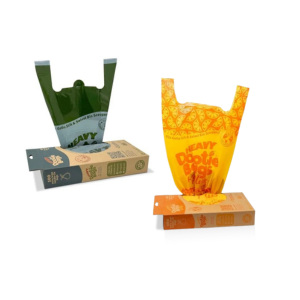
Making Life Clean, Quick and Convenient
Making Life Clean, Quick and Convenient
A Golden Retriever puppy is likely the most fragile and memorable time in any dog’s life. They are unbelievably fragile at this stage and require the attention of parents who provide love and warmth for them. Everything about a Golden Retriever newborn, from their fuzzy little bodies to their sleeping eyes, is what makes everybody love dogs.
This article will include everything you need to know about Golden dog newborns: care, health, pictures, and cost. It is important to understand a large amount about Golden newborns, and with the knowledge you are given, you will be able to have a loved dog that is well-adjusted to the world.
With eyes closed, folded ears and, a soft, dense, woolly coat that ranges from pale cream to the color of gold that stays short, that Golden Retriever puppy comes into the world. Golden Retriever Puppies are tiny, fluffy creatures averaging a pound in weight.
They are adorably sweet and even cuter, if possible, for they wear fuzzy, wiggly bodies and softly rounded features for a few days as a puppy. For that period, this puppy literally depends on their mom for everything in terms of warmth, comfort, and nutrition.
If you are pets lover, love means never leaving a mess behind. The Dog Poop Catcher is best product to keep environment clean.
The development of a Golden Retriever happens rapidly.
Week 1–2: Puppies are blind and deaf, spending most of their time nursing and sleeping.
Week 3–4: Their eyes and ears open, and they start crawling and making sounds.
Week 5–6: They begin to play, explore, and interact with their littermates.
Week 7–8: The puppies become highly active, learning social skills and bonding with humans.
Every stage in a Retriever newborn’s development builds the foundation for a well-adjusted adult dog.
Nurturing a newborn Golden Retriever demands time, patience, and the right environment. The puppies should have a nice, warm, clean space to be in (around 85-90 degrees Fahrenheit), especially when first starting.
If you are going to tube feed the puppy with a milk replacer, commit 100% to that every 2-3 hours. Baby has to have hygiene on point, or you will not have a safe experience. Yes, Golden Retriever pups are delicate, but they also need to develop as animals.
Feeding a Golden Retriever newborn begins with nursing or formula feeding every few hours. Around 3–4 weeks of age, soft puppy food can be introduced and gradually increased as they grow. By 6–8 weeks, most can transition fully to high-quality puppy kibble.
Good nutrition during the Golden Retriever dog newborn stage plays a vital role in their long-term health.
A healthy Golden Retriever newborn will gain weight steadily, feel warm, and have a strong suckling reflex. Unhealthy signs include constant crying, cold skin, or lack of appetite.
Healthy signs: pink gums, firm body, content behavior
Unhealthy signs: weak limbs, unresponsiveness, dehydration
Monitoring a Golden Retriever newborn closely ensures quick response to potential issues.
A Golden Retriever newborn needs a secure, calm, and hygienic space to grow. Use soft blankets and create a whelping box in a quiet area away from foot traffic and loud noises. Limit visitors during the first week to reduce stress.
This peaceful environment helps a Golden Retriever newborn feel safe and secure during its earliest days.
Bonding with a Golden Retriever newborn starts with gentle contact after the first week. Petting, talking softly, and being near them allows your scent and voice to become familiar. This trust-building stage sets the tone for your lifelong relationship. A well-socialized Golden Retriever newborn becomes a confident and affectionate companion.
The Giant Golden Retriever Puppies are delicate to conditions such as hypoglycemia, hypothermia, and dehydration. Regular daily monitoring of weight, warmth, and hydration stops complications from happening.
Deworming and vet checkups are necessary even before vaccination starts. Keeping a close eye on your Golden Retriever newborn ensures any health issue is addressed early.
Vitaminophagia Hypothermia and Hydratab facility is vulnerable to many conditions at the time of emergence from the Golden Retriever. Daily weight, warmth, and hydration monitoring maintain a low complication stake. Deworming and vet before shots because actually, they need that too. Observe your Golden Retriever closely
If you’re caring for a Golden Retriever newborn, these tips will help:
A Golden Retriever newborn is full of potential—it’s up to you to help them thrive.
The price of a Golden Retriever newborn depends on the breeder’s reputation, location, and bloodline.
Ensure you’re working with responsible breeders who provide health clearances. While the initial price of a Golden Retriever newborn may vary, the lifelong companionship is priceless.
A Golden Retriever newborn typically weighs 14 to 16 ounces at birth.
Tracking your Golden Retriever newborn’s weight helps ensure they are developing on schedule.
If you’re searching for a Golden Retriever newborn for sale, focus on breeders who prioritize animal welfare. Visit the facilities, meet the mother, and ask for health documentation. You can also find newborns through rescue networks.
Choosing a reputable source for your Golden Retriever newborn makes a big difference in your puppy’s health and happiness.
Few things are more heartwarming than Photos of a Golden Retriever newborn snuggled up in a soft blanket. Their wrinkled noses, tiny paws, and innocent faces make for perfect pictures. Capturing these early moments of your Golden Retriever newborn creates memories to cherish forever.
An 8-week Golden Retriever child has changed into an active, energetic, fluffy puppy. They are so playful, inquisitive, and full of priceless happiness. The best puppy photos you will ever own. Doggie gone, well, this stage is when your newborn is becoming family.
They really seem to be everywhere, if you are just browsing around the internet or doing a little reading on a breed, for that matter, Golden Retriever puppy pictures. Sleeping puppies, puppies playing with other puppies, and all, of course, just displaying the Golden Retriever’s nature towards love.
Golden Retriever gilt There are times golden several newborns get an over-sharing go viral due to ridiculously adorable!
If you want to learn Types of Doodlies visit here.
A newborn Golden Retriever typically weighs between 14 to 16 ounces (0.9 to 1 lb) at birth.
Yes, Golden Retrievers are known for being gentle, patient, and excellent with newborn babies.
Newborn Golden Retrievers are usually light cream to golden in color, which may darken slightly as they grow.
The hardest age is often around 6 to 18 months, when they are energetic, teething, and testing boundaries.

Bundle

Bundle

Bundle

